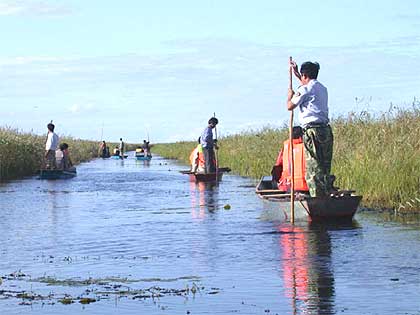- The capital, Seoul, one of the world’s largest cities, is located in the Han River basin. The population of the basin, now 41% of the national total, almost tripled between 1966 and 2005, from about 7 million to almost 20 million. Nevertheless, urban areas account for just 1% of the basin. Forests make up 78%, cultivated areas 16%, and grasslands and water bodies 5%. The Han River basin is considered the heart of South Korea.
- Annual renewable water resources in the Han River basin are estimated at 16 billion m3. As of 2003, 8.5 billion m3 of this amount was actually in use.
- Owing to the high rate of urbanization, the household sector – which accounts for 2.8 billion m3 (33% of overall consumption) – is the number one source of consumption, followed by agriculture (1.6 billion m3 or 19%) and industry (0.8 billion m3 or 9%). The remaining 3.3 billion m3 is allocated for environmental purposes.
- Agricultural water use in the Han River basin accounts for about 10% of water use for agriculture in the Republic of Korea. Rice fields alone consume 70% of the total.
- There are 724 reservoirs, primarily serving the agricultural water requirements in the basin. Of these, 127 meet the international standards for large dams.
The section “Did You Know…?” is taken from the 3rd World Water Development Report “Water in a Changing World“.
Source: http://www.unesco.org


